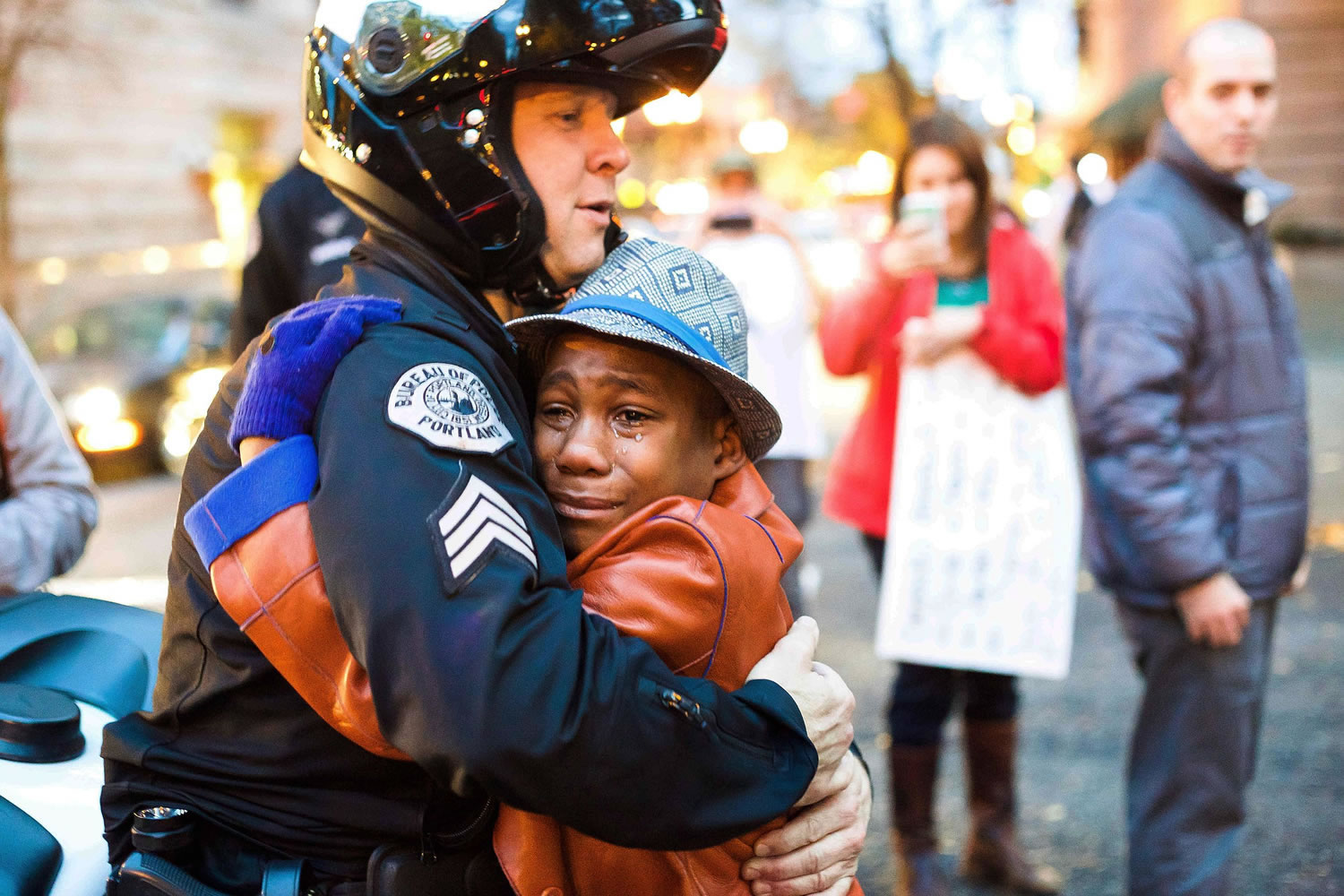SEATTLE — The grand jury that declined to indict Ferguson police officer Darren Wilson for killing Michael Brown was focused on whether he might have acted in self-defense when he decided to shoot the unarmed man.
But before that, could Wilson have avoided getting into a spot where he had to make that split-second, life-or-death decision Aug. 9?
U.S. departments have in recent years stepped up training in “de-escalation” — the art of defusing a tense situation with a word or a gesture instead of being confrontational or reaching for a weapon.
Proponents, including the Justice Department, say the approach can improve trust and understanding between police and residents, curtail the unnecessary use of force and improve the safety of officers and civilians alike.
“We haven’t taught officers to just walk away,” said Cambridge, Mass., Police Commissioner Robert Haas. “But if the only reason a person is acting up is because you’re standing there … isn’t that a viable approach?”
“My job isn’t to just sit and wait,” Wilson, 28, told ABC News.
Haas and other law enforcement officials said they didn’t want to second-guess Wilson’s actions, not having been in his shoes.
But, many said, the case should accelerate a national discussion about police culture and the potential for broader use of de-escalation, which is considered especially important in mental-health or drug-related crises.
In Missouri this month, a federal law enforcement team trained St. Louis-area police, including top commanders from Ferguson, on how unintentional bias affects police work. That goes hand-in-hand with de-escalation.
“In every police encounter, the officer and the civilian bring with them and see the world through their experiences. The more these views diverge, the more they immediately see the other as a threat,” said Jenny Durkan, the former U.S. attorney in Seattle who led the effort to curb excessive uses of force by city police.
In investigating police agencies, the Justice Department has singled out poor de-escalation tactics.
In Seattle in 2010, an officer killed a Native American woodcarver who had crossed the street while holding a small knife and a block of wood. The officer got out of his car, and when the carver — who turned out to be hard of hearing — didn’t immediately drop the tool as ordered, he fired.
Like Wilson, the officer wasn’t charged criminally because of the high bar for such prosecutions against police, but the case helped spur the federal civil rights investigation of the department. A consent decree overhauled the department’s training, putting a premium on de-escalation and bias-free policing.
The DOJ has already launched a similar investigation in Ferguson.
In practice, de-escalation can take many forms, said Seattle police spokesman Sean Whitcomb. Sometimes it means that multiple officers respond rather than one, to show excitable subjects they’re outnumbered.
But for an officer, it can also mean calmly introducing yourself, listening to what someone is saying and simply relating to the person. Body-worn cameras can help, experts say, because both officers and civilians tend to behave better when they know they’re being recorded.
“If we can use language and presence to get people to comply with lawful orders, we can consider that a win,” Whitcomb said.
Still, reducing tension isn’t always easy. A 2012 report from the Police Executive Research Forum points out that younger officers, accustomed to communicating through electronic media, may be less skilled face-to-face.
And some officers worry about giving away the upper hand.
“Traditional police training reinforces that you must always display a very strong, assertive presence,” said Sue Rahr, executive director of Washington’s police academy. “But if the officer reacts to a challenge as most human beings would — by challenging back — the situation is going to devolve.”



